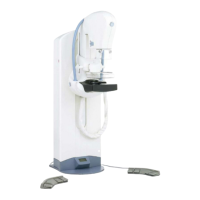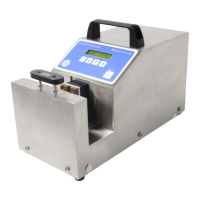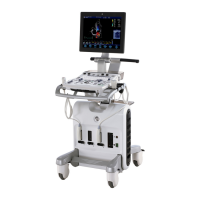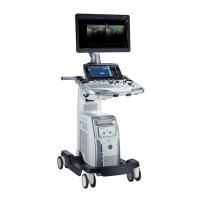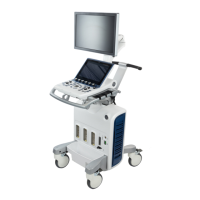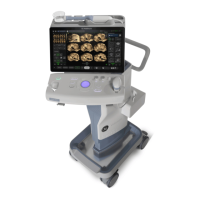?
The operator selects the following parameters:
D Focal track (Mo, Rh)
D Filter (Mo, Rh, A1)
D Focal spot (0.3 or 0.1)
D Screen–film combination,
D kV values,
D mAs values.
The system displays the inhibit conditions.
Note: Selecting the screen-film combination in Manual Mode has no effect. The user is
recommended to consider the speed of the screen-film combination when
selecting the kV and mAs values.
3–3–1 Standard Exposures
According to the thickness and density of the breast to be examined, select a configuration
from Table 2–1, with suitable kV values.
Note that while the examination of a very dense breast using the rhodium or molybdenum
tracks provides similar contrast images, the same breast examined via the rhodium track
benefits from better tissue visualization and a lower average glandular dose.
Tables 2–2 (below) gives examples of the most frequently used configurations and kV
values.
TABLE 2–2
COMMON EXPOSURES
2 3# 24
Note: If the operator selects an incorrect configuration (filter selection error), the system
will select an authorized configuration by automatically changing the filter. A
message appears on the first line of the readout.
It is recommended to use a Bucky.
The screen/film combination selection depends on user preference.
The mAs value selection depends on the screen speed.
FOR TRAINING PURPOSES ONLY!
NOTE: Once downloaded, this document is UNCONTROLLED, and therefore may not be the latest revision. Always confirm revision status against a validated source (ie CDL).
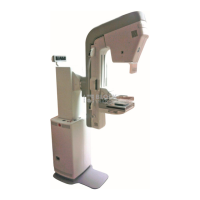
